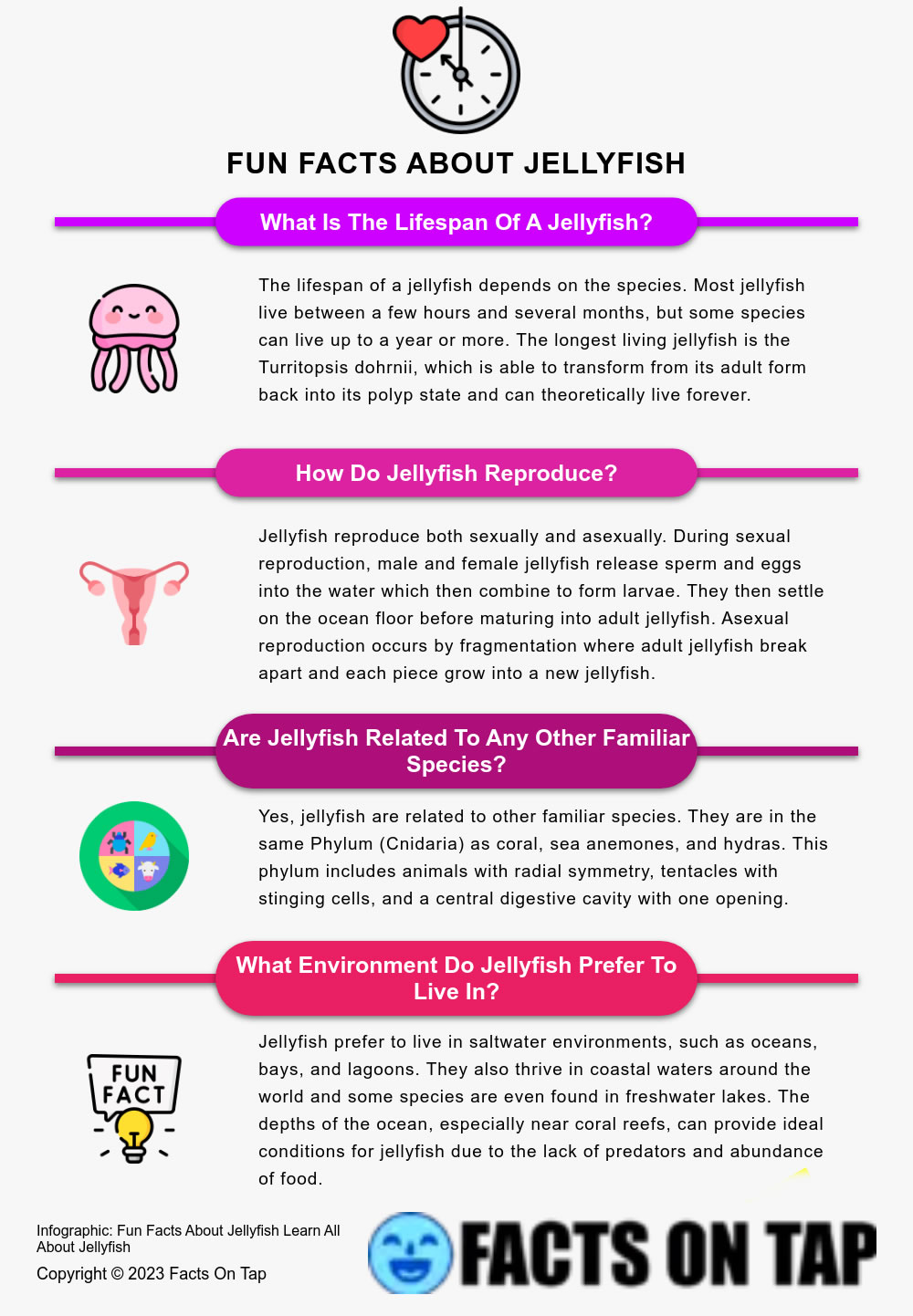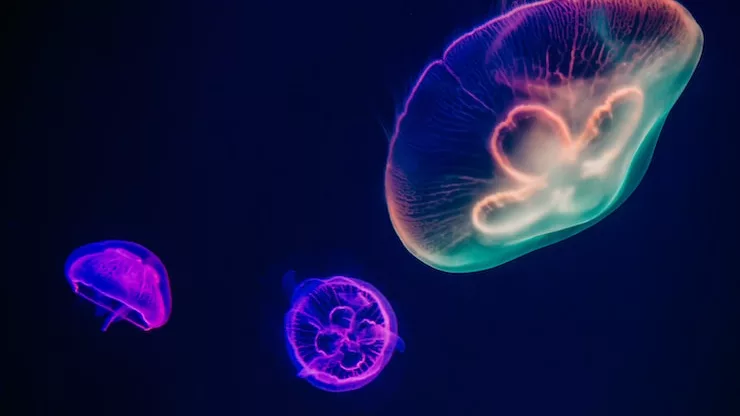Jellyfish are fascinating creatures that can be found in oceans all over the world. They are known for their unique appearance and their ability to deliver painful stings.
In this article, we will explore some interesting facts about jellyfish that you may not have known before.
- There are over 2,000 species of jellyfish in the world. The most common species is the moon jellyfish, which can be found in oceans all over the world.
- Jellyfish are not fish at all. They are invertebrates, which means they do not have a backbone.
- Jellyfish have been around for millions of years. Fossils of jellyfish have been found that date back to the Cambrian period, which was over 500 million years ago.
- Jellyfish are made up of over 95% water. This makes them incredibly lightweight and allows them to float effortlessly in the water.
- Some species of jellyfish are bioluminescent, which means they can produce their own light. This is often used to attract prey or to scare off predators.
- Jellyfish are not very fast swimmers. Most species of jellyfish can only move at a speed of about 2 miles per hour.
- Jellyfish are not very intelligent creatures. They do not have a brain or a central nervous system, which means they do not have the ability to think or feel pain.
- Jellyfish are carnivores. They feed on small fish, plankton, and other small sea creatures.
- Jellyfish have a very short lifespan. Most species of jellyfish only live for a few months, although some can live for up to a year.
- Jellyfish are not endangered, but their numbers have been increasing in recent years. This is due to a combination of factors, including overfishing and climate change.
- Jellyfish play a crucial role in the marine food chain. They serve as a food source for larger marine animals such as sea turtles and some species of birds and fish.
- Jellyfish have a unique reproductive process. They reproduce both sexually and asexually. For sexual reproduction, the male releases sperm into the water, which then fertilizes the eggs held by the female.
- Jellyfish stings can be quite harmful. Depending on the species, stings can cause mild to severe reactions, and in rare cases, can be fatal to humans.
- Contrary to popular belief, peeing on a jellyfish sting is not an effective treatment. In fact, it can potentially worsen the injury. Vinegar is often recommended to deactivate the venom.
- Certain jellyfish species, like the immortal jellyfish (Turritopsis dohrnii), have the ability to revert back to their juvenile state after reaching adulthood. This fascinating process makes them theoretically immortal.
- While most jellyfish species are harmless to humans, the box jellyfish is considered the most dangerous. Its venom can cause heart failure, and its sting is extremely painful.
- The size of jellyfish varies widely across different species. The largest known species, the lion’s mane jellyfish, can reach a diameter of over 6 feet with tentacles stretching more than 100 feet.
- Jellyfish don’t have traditional eyes, but some species possess eye-like sensory organs called ocelli, which can detect light and dark.
- Some jellyfish, like the purple-striped jelly (Chrysaora colorata), have a symbiotic relationship with small fish, which take shelter among their tentacles for protection against larger predators.
- Jellyfish have an unusual way of moving through the water. They use a form of jet propulsion, where they contract and expand their bodies to push water out of their bell-shaped bodies, propelling themselves forward.
In conclusion, jellyfish are fascinating creatures that have been around for millions of years.
While they may not be very intelligent or fast, they are still an important part of the ocean ecosystem.
If you ever get the chance to see a jellyfish up close, take the opportunity to appreciate their unique beauty.
Jellyfish Infographic

FAQ
What should I do if I get stung by a jellyfish?
If you get stung by a jellyfish, it is important to rinse the affected area with vinegar or saltwater.
Do not use fresh water, as this can make the sting worse.
You can also use tweezers or a credit card to remove any tentacles that may be stuck to your skin.
Can jellyfish swim upside down?
Yes, jellyfish can swim upside down. In fact, some species of jellyfish spend most of their time upside down, feeding on the seafloor.
Are jellyfish dangerous to humans?
Most species of jellyfish are not dangerous to humans, although some can deliver painful stings.
It is important to avoid touching jellyfish and to be cautious when swimming in areas where jellyfish are known to be present.
How do jellyfish reproduce?
Jellyfish reproduce sexually, with males releasing sperm into the water and females releasing eggs. The fertilized eggs develop into larvae, which eventually grow into adult jellyfish.
Some species of jellyfish can also reproduce asexually, with the adult jellyfish producing clones of themselves.
Can jellyfish survive out of water?
Most species of jellyfish cannot survive out of water for very long.
However, some species are able to survive for short periods of time if they are kept moist.

I am a fun fact enthusiast and creator of Facts On Tap.
I love to share my knowledge and curiosity with readers and inspire them to learn something new every day.
When I’m not writing, I enjoy traveling, reading, and playing trivia games with my friends.




